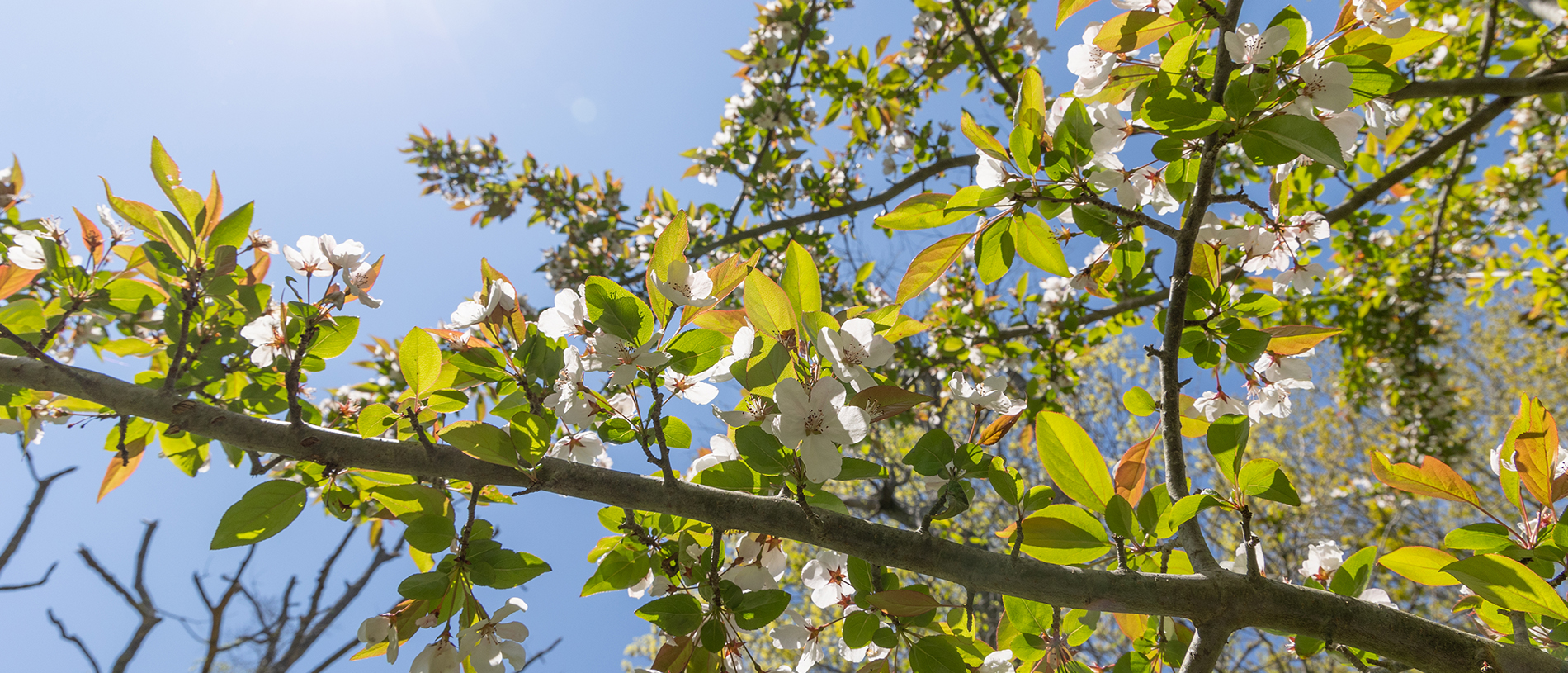Buds, Leaves, and Global Warming
Spend time in nature and collect valuable data on growing seasons and climate change by monitoring leaf measurements from emergence to dropping.
The Buds, Leaves, and Global Warming community science project studies the effects of climate change on the trees at our wildlife sanctuaries. Mass Audubon has implemented the long-standing Harvard Schoolyard Program at nine wildlife sanctuaries across the state.
Why Monitor Growing Seasons?
With changing seasonal patterns and extreme weather events impacting our trees, we want to know how climate change impacts the growth of our forests.
When we study tree phenology annually and compare our findings with other long-term studies of other trees across the state, we can begin to see how the length of the growing season is impacted and how climate change may disrupt the function and structure of the region’s forested ecosystems and the wildlife living there.
Mass Audubon is seeking answers to these 3 key questions:
- How long is the growing season at our wildlife sanctuaries?
- How might the length of the growing season relate to climate change?
- When does the growing season for trees end in autumn, and when does the new growing season begin in spring?
Join the Project
You can get involved in this project by reaching out to a participating wildlife sanctuary. Depending on location, you may have the opportunity to partake in an educational program or become a community science data volunteer.
Participating wildlife sanctuaries:
- Boston Nature Center, Mattapan
- Arcadia, Easthampton
- Wachusett Meadow, Princeton
- Broad Meadow Brook, Worcester
- Oak Knoll, Attleboro
- Wellfleet Bay, South Wellfleet
- Drumlin Farm, Lincoln
- Broadmoor, Natick
- Stony Brook, Norfolk
Educators can sign up to collect data by registering with the Harvard Forest.
Questions? Contact us: [email protected].



